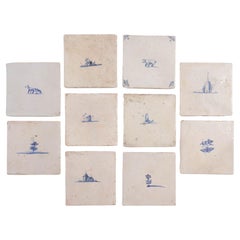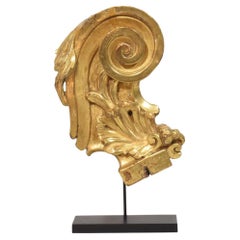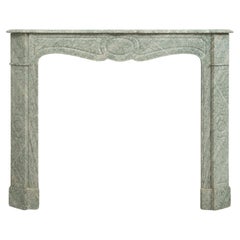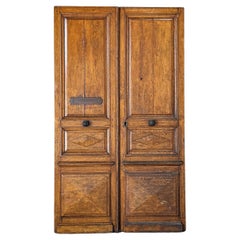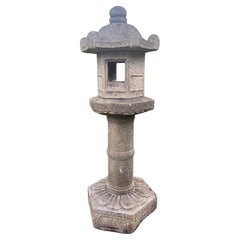Building and Garden Elements
18th Century Dutch Georgian Antique Building and Garden Elements
Porcelain
Mid-17th Century Dutch Antique Building and Garden Elements
Faience
18th Century Italian Baroque Antique Building and Garden Elements
Wood
Mid-19th Century French Louis XV Antique Building and Garden Elements
Marble
19th Century French Antique Building and Garden Elements
Oak
19th Century Japanese Edo Antique Building and Garden Elements
Stone
Early 19th Century French French Provincial Antique Building and Garden Elements
Oak, Paint
Late 19th Century French Antique Building and Garden Elements
Marble, Iron
Late 19th Century High Victorian Antique Building and Garden Elements
Lead
Late 19th Century American Arts and Crafts Antique Building and Garden Elements
Stained Glass
18th Century Italian Antique Building and Garden Elements
Wood, Paint
19th Century Japanese Meiji Antique Building and Garden Elements
Stone
Mid-19th Century French Empire Antique Building and Garden Elements
Brass
19th Century English High Victorian Antique Building and Garden Elements
Pine
Early 18th Century French Rococo Antique Building and Garden Elements
Breccia Marble
Late 18th Century Italian Baroque Antique Building and Garden Elements
Sandstone, Bronze
Late 19th Century Spanish Neoclassical Antique Building and Garden Elements
Stone
19th Century French Antique Building and Garden Elements
Metal, Bronze
Late 18th Century French Neoclassical Antique Building and Garden Elements
Wood
Late 19th Century Italian Rococo Antique Building and Garden Elements
Silver Leaf
19th Century French Louis XIII Antique Building and Garden Elements
Stone, Limestone
19th Century French French Provincial Antique Building and Garden Elements
Iron
1870s Antique Building and Garden Elements
Marble
19th Century French Bohemian Antique Building and Garden Elements
Marble, Iron
Late 19th Century French Art Nouveau Antique Building and Garden Elements
Marble, Iron
19th Century French Antique Building and Garden Elements
Limestone
Late 18th Century American Rustic Antique Building and Garden Elements
Sandstone
19th Century English Antique Building and Garden Elements
Wood
Late 19th Century French Renaissance Revival Antique Building and Garden Elements
Oak
18th Century Italian Baroque Antique Building and Garden Elements
Marble
19th Century French Antique Building and Garden Elements
Wood
1890s English Victorian Antique Building and Garden Elements
Iron
19th Century French Antique Building and Garden Elements
Wood
19th Century French Napoleon III Antique Building and Garden Elements
Iron
19th Century French French Provincial Antique Building and Garden Elements
Iron
Mid-19th Century Japanese Edo Antique Building and Garden Elements
Iron
19th Century French Antique Building and Garden Elements
Wood
19th Century French Antique Building and Garden Elements
Wood, Glass
1880s Dutch Victorian Antique Building and Garden Elements
Bronze
19th Century French Napoleon III Antique Building and Garden Elements
Wrought Iron
19th Century French Antique Building and Garden Elements
Wood
19th Century French Country Antique Building and Garden Elements
Wood
19th Century English Victorian Antique Building and Garden Elements
Brass, Iron
Late 19th Century Antique Building and Garden Elements
Wrought Iron
19th Century French Napoleon III Antique Building and Garden Elements
Brass, Iron
19th Century French French Provincial Antique Building and Garden Elements
Bronze, Iron, Wrought Iron, Zinc
19th Century European Gothic Revival Antique Building and Garden Elements
Iron
19th Century English Other Antique Building and Garden Elements
Copper
19th Century American American Classical Antique Building and Garden Elements
Brass, Wire
17th Century Italian Baroque Antique Building and Garden Elements
Iron
Late 19th Century French Antique Building and Garden Elements
Marble
18th Century Italian Gothic Antique Building and Garden Elements
Marble
Mid-19th Century Gothic Antique Building and Garden Elements
Walnut
1880s American Victorian Antique Building and Garden Elements
Brass
19th Century French Napoleon III Antique Building and Garden Elements
Iron
18th Century French Antique Building and Garden Elements
Wood
18th Century Japanese Edo Antique Building and Garden Elements
Stone, Granite
19th Century French Victorian Antique Building and Garden Elements
Iron
Mid-19th Century French Napoleon III Antique Building and Garden Elements
Wood
Late 19th Century European Arts and Crafts Antique Building and Garden Elements
Wrought Iron
Antique Garden Furniture and Architectural Elements
Choosing the right antique or vintage building and garden elements can prove pivotal when you’re working to beautify any room in your home or just put the finishing touches on a garden or other outdoor area.
It takes time and effort to improve your outdoor space or merely to bring an air of tranquility to an indoor area set aside for private relaxation or gathering with friends. The good news is that 1stDibs can help.
To introduce a sense of timelessness to a back patio or interior common area, choose cast-stone statues or sculptural busts for a dose of drama or select ornate architectural elements such as corbels, plaques or panels made of marble or iron. Elsewhere, find a focal point in your living room and create a “feature wall” by bringing pops of color into a corner with handmade antique ceramic tiles.
It helps when design changes like these have a practical upside too.
Victorian cast-iron stair treads hearken back to a time when adding decorative details to your property was a priority. While lending an attractive appearance to an exterior staircase, these safeguards render the steps slip-resistant for those coming and going. And as one good stylistic choice usually leads to another, pairing your sophisticated treads with a coupling of 19th-century hand-forged andirons would be a thoughtful, durable touch for any courtyard or comfortable lounge space, be they intended for an indoor fireplace or a patio firepit.
Where the garden is concerned, any sophisticated garden ornaments you select should work with nature, not against it. Wrought-iron garden gates will simply refuse to be relegated to the background. Instead, they’ll draw attention to your painstakingly sculpted hedges and colorful flora. When paired with a sparse arrangement of other tasteful additions, such as a stone planter, garden stool or other welcoming pieces of outdoor seating, the effect can be transformative.
On 1stDibs, find a sprawling collection of antique garden furniture and architectural elements that meet every need. Our offerings include everything from sculptural bathroom fixtures to flooring ideas to pedestals and columns designed in a variety of styles and much more.
Read More
39 Incredible Swimming Pools
It's hard to resist the allure of a beautiful pool. So, go ahead and daydream about whiling away your summer in paradise.
This Lavish 18th-Century Chimneypiece Comes from a Historic Scottish Estate
The exceptionally crafted mantel was saved despite the home’s regrettable demise.
A Pair of Monumental Stone Tigers Protect and Guide Wandering Souls
The Qing dynasty beasts honored the dead and warned off malicious spirits.
Andrés Monnier’s Stone Tub Makes Bathing a Rite of Renewal
The dramatic piece transforms a daily scrub into an act of communion with the elements.
Meet the Siblings behind the Exquisite Outdoor Furniture of McKinnon and Harris
Anne and Will Massie apply the lessons of the past to create alfresco pieces as timeless as the traditions that inspire them.
35 Wondrous Outdoor Dining Spaces
Eating meals alfresco is one of the great pleasures of warm weather, and a beautifully appointed space only heightens the experience. Get inspired by these delectable dining areas as you think about creating your own outdoor oasis.
In These Chic Homes, Indoors and Outdoors Freely Mingle
Through potted plants, garden furniture, nature-inspired art and architectural apertures, designers are bringing the outside in.
24 Perfect Patios with Fire Pits and Fireplaces
In these stylish spaces, the outdoor season extends year round.

